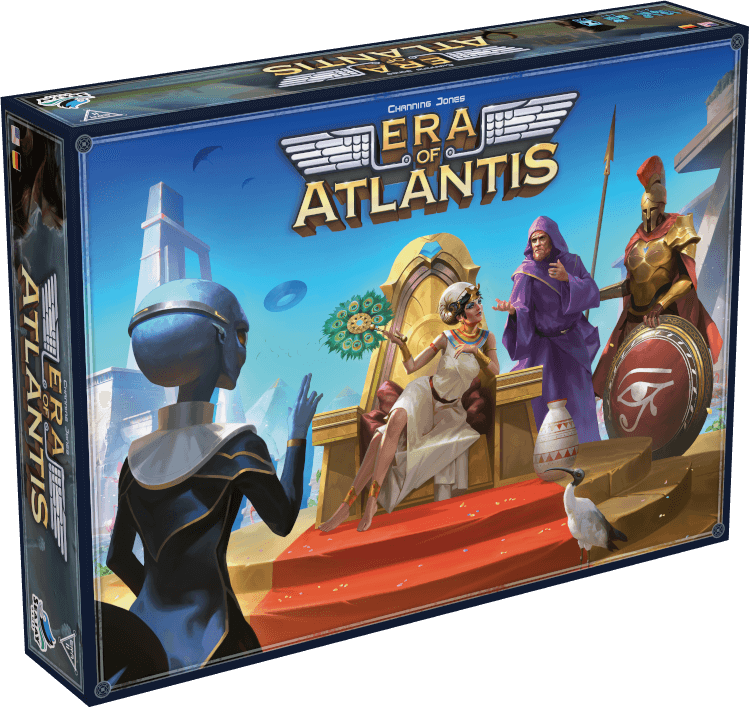The Core Idea
I started the design of Era of Atlantis in 2017 after learning about the fundamental mechanics of the game Between Two Cities. This mechanism involves players sharing and building a city with each of their two neighboring players, with only the lower-valued of the two contributing to your final score at the end of the game.
Before I even played that game, I had the idea of implementing this novel idea for an area control game. After having played Between Two Cities, I realized that I would have to change a few things for my implementation of this idea.
The Setting
I also wanted to use the setting in the same game universe as my first self-published game, “Galactic Era”. So I thought the distant mythological past (about 12,000 years ago) would be an ideal setting since there were fewer fixed ideas on how the world should be politically at that time, which gave me more creative liberty. It also gave me the opportunity to include stories about supposedly lost civilizations from that time, that I had researched.

Creating The Control Network
The first thing I realized was the need to clearly distinguish between what the player is and what the shared entities with other players are. I quickly settled on the idea that players are “secret societies” controlling two of the major powers in this world at that time. Those being five mythological civilizations in various corners of the Earth, including legendary nations such as Atlantis, Lemuria, and Hyperborea.
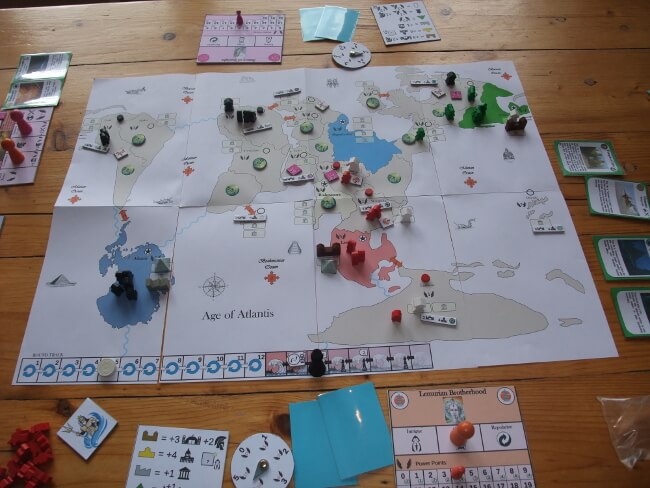
These “major nations” would then expand, taking over “minor nations”, which are basically the battlegrounds between them. So that all major nations stayed in the game until the end, I implemented a rule that no major nation could lose its “home territory”. I explained that thematically with a situation similar to the Cold War, in which they all stockpiled weapons of mass destruction which they threatened to use should their home territory be attacked, and thus deterring such attacks.
More Scoring Categories Needed
As mentioned, I quickly realized that scoring the lesser of your two major nations only (like in Between Two Cities) would too often lead to ties, so I needed to add other ways to score. Thus I decided to have some other scoring options which would comprise about a third of a player’s points. If players carefully balanced the powers of the major nations, the deciding factor would be these extra, personal points.
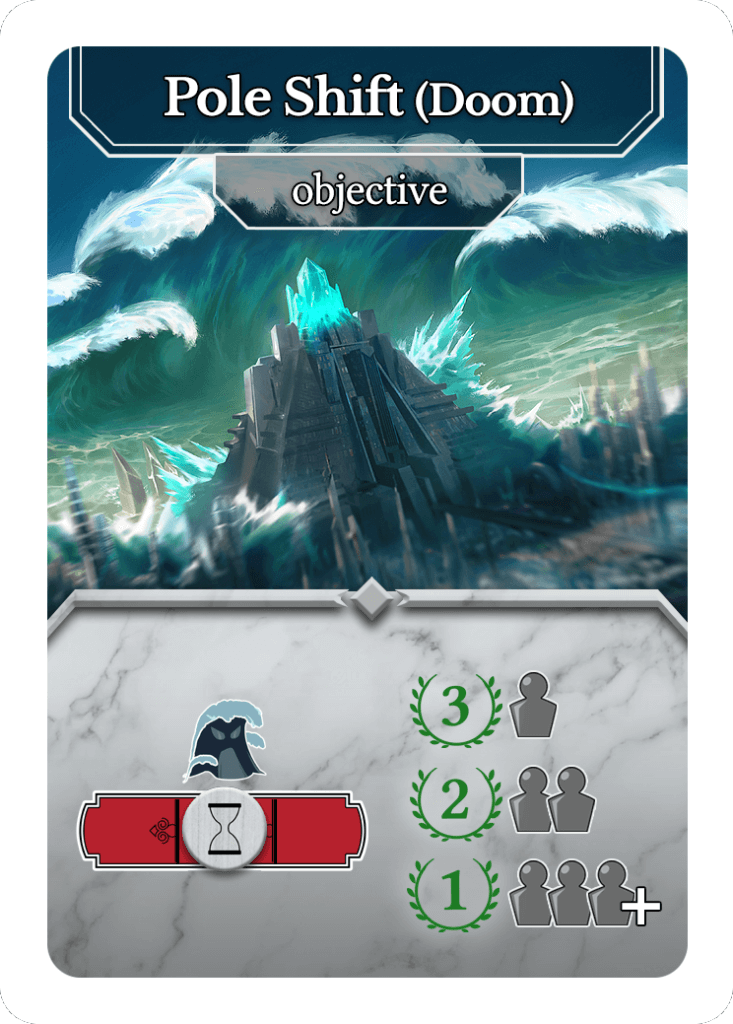
Since I also wanted a hidden scoring element to reduce Kingmaking, I needed to include secret objectives which would be revealed at game end for final points. I decided that these objectives should also overlap heavily between players, creating further points of possible cooperation. Thus it became three different objectives only, each corresponding to a different way the game could end.
Using Worker Placement
Besides having an area control element I also decided to use the worker placement mechanism because of its popularity and how it worked well in the context of this game. I decided to do something similar to Scythe with each major nation having its own action spaces which players put their pawns on to execute actions. For thematic reasons I decided everyone should have two such large pawns (instead of one, as in Scythe), but only using one of them per turn.
It was largely a coincidence that this turned out be an interesting way to restrict action spaces, because now players also had to decide on every turn which of two action spaces they would free up for future use. This also created the possibility of a player intentionally blocking certain action spaces their partner might want to use, thus creating possible seeds of contention between partners.
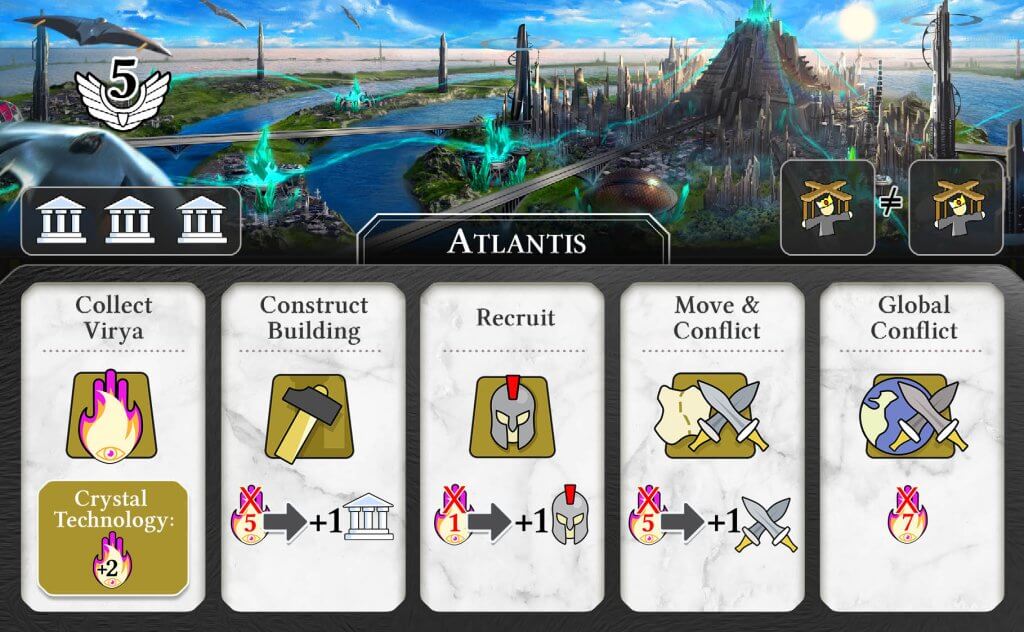
Partners Must Depend on Each Other
The main guideline I kept in mind was that the two controlling players of a major nation would be as dependent on each other as possible. So no player should be able to easily run everything for a major nation without the other player. The main way I did this was by splitting up the actions needed for a major nation to expand into small steps, each following one requiring the cooperation of the other player. So no player could do everything alone.
For example, if a major nation wants to expand militarily, the first thing that needs to be done is to recruit troops. One of the two players must do that. After having done that, the other player can then use these troops to conquer territories. Thus the first player is dependent on the second player acting in his or her best interest. This creates a need for both players to cooperate.
To insure that both players are dependent on each other though, the turn order may never change. If turn order could be changed, then occasionally players could do a double turn with the same nation without the need for the other player to act. Without turn order changing though, both players are always at the mercy of the other, for better or worse.

Testing Turn Order Advantage
For a while I thought that the player being last in turn order would have a significant advantage, having the most influence on how the game ends. I tried to solve this (rather inelegantly I admit) by giving „compensation counters“ to players which balance this out point-wise at game end. After many playtests I noticed that these overcompensated and made those first in turn win order more often. So I decided to remove these after all and instead give those first in turn order a smaller advantage instead, namely that the winner in the case of a tie in points is determined by turn order. I also added a section of the chapter for strategy tips what different advantages players get from their position in turn order, so players know better whom to counteract when.
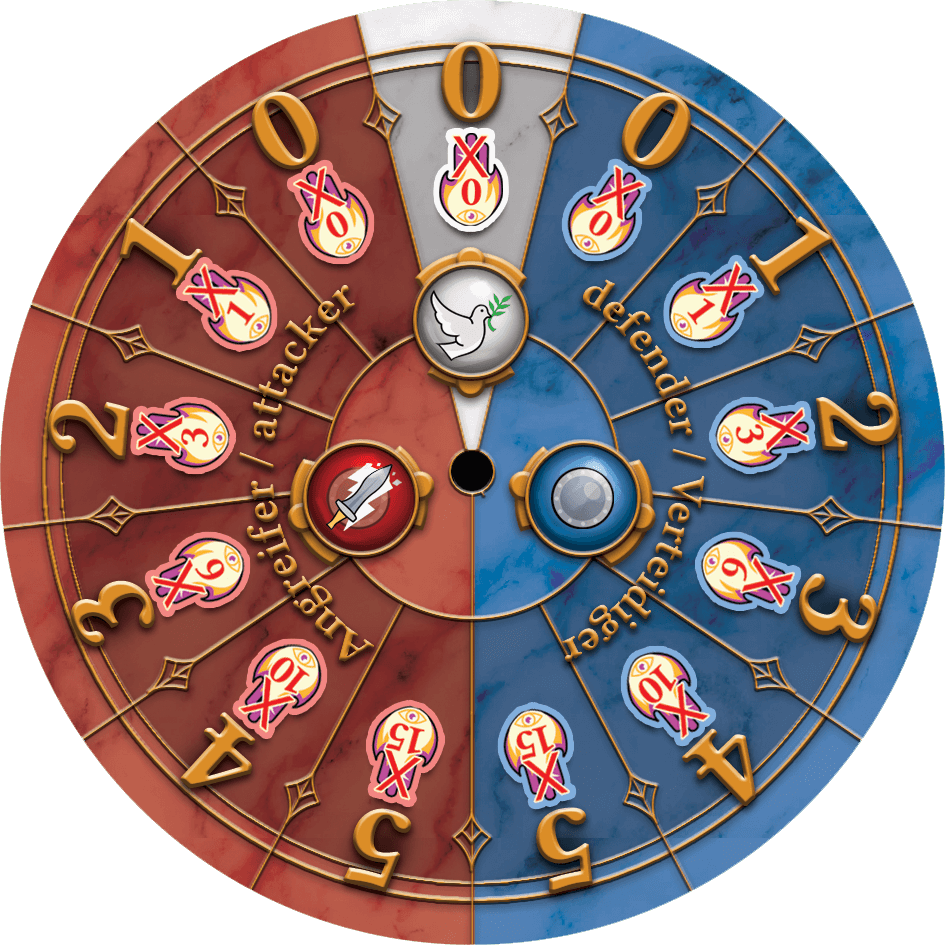
A Different Kind of Bidding
Another interesting feature I implemented to foster cooperation, was a non-linear cost of bidding. To explain, players use bidding dials to resolve conflicts spending “Virya“ (the currency of the game). I decoupled the effect of the bidding from its cost (in most games that is the same), using the triangular numbers. So an effect of 1 costs 1, an effect of 2 costs 3, an effect of 3 costs 6, and so on. This means higher bids can become very expensive. It also means though that two players adding their bids together (if they cooperate) can save Virya. For example, a single player bidding for an effect of 2 would have to pay 3 Virya. Two players adding their bids of 1 each only pay a combined cost of 2 Virya though (thus saving 1 Virya between them).
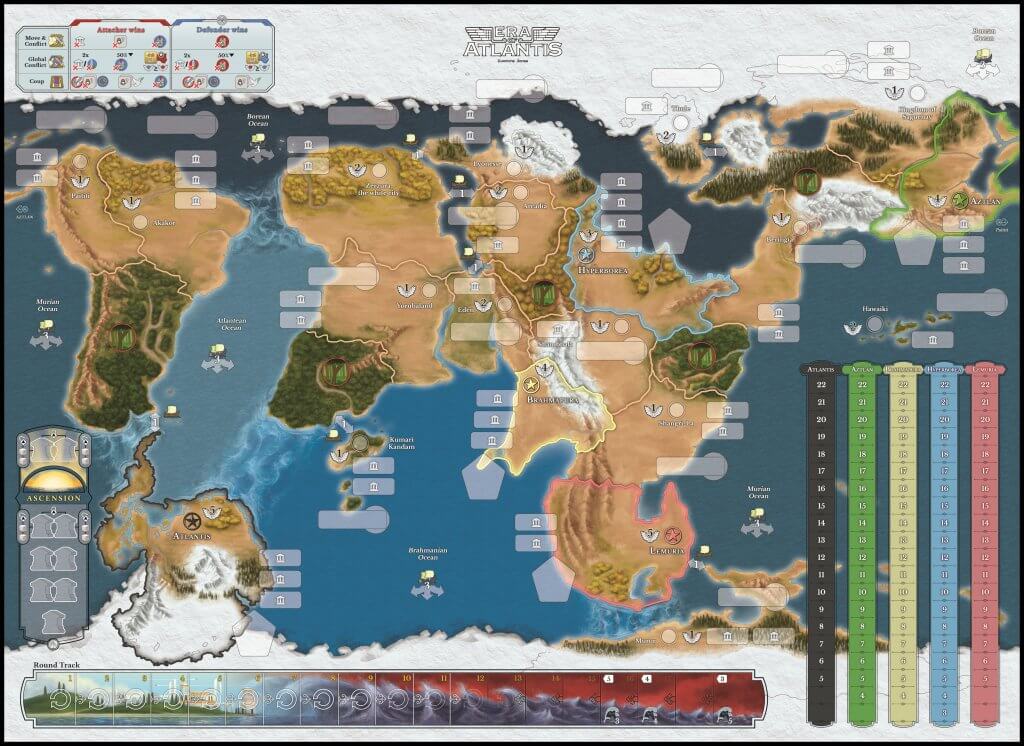
The Story Arc: A Cold War
I also included some types of actions specifically to create a game arc retelling the story of the fall of Atlantis and how it came to be according to the story. This action became the Global Conflict action. The story arc I wished to tell, was that of gradual expansion and an eventual arms race, resulting in a Cold War type of situation that would possibly culminate in a massive conflict. The Global Conflict action is intended to be played late in the game, at the peak of the conflict between nations, as a possible turnaround point, changing the outcome.
Letting the Game Become What It Wants to Be
It turned somewhat by coincidence that the late game can still be quite swingy. Meaning that major nations can fall or rise quite quickly. One reason for this being that if the two controlling players of a nation concentrate all their actions on that nation, it can grow very quickly. I was initially worried about the swinginess, though fortunately players almost always viewed this quite positively, since the winner was not set in stone too early and you always had chances to win even late in the game. So I decided to let this aspect of the game be how it was.
Crowdfunding
I am happy to announce that the design of Era of Atlantis is finished and ready to launch its crowdfunding campaign in September 2025.
